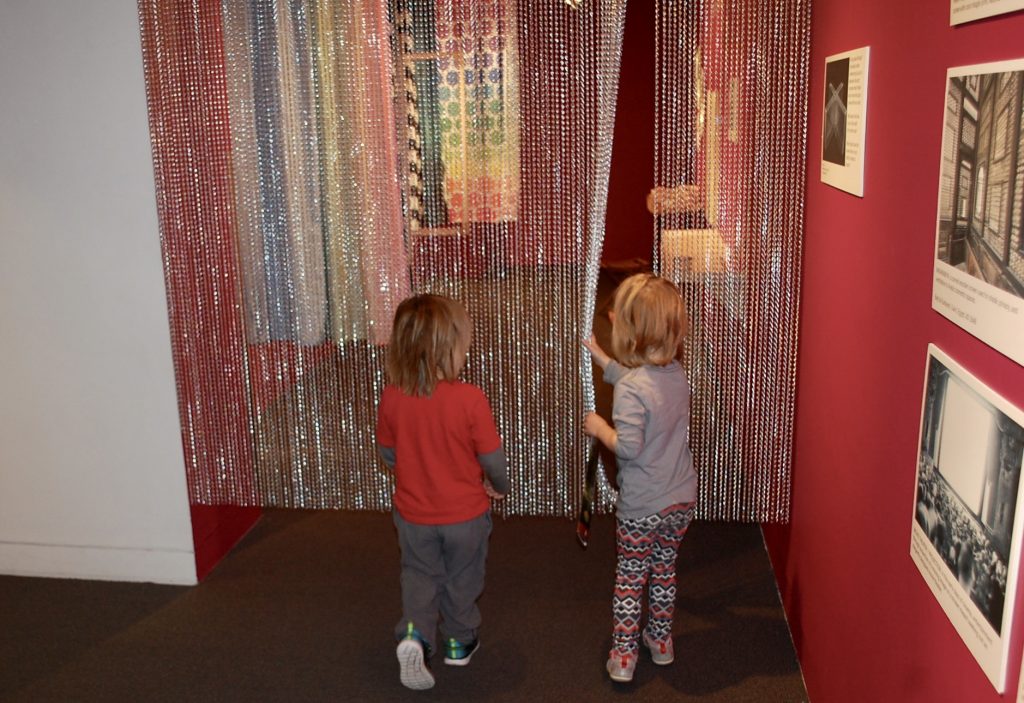Reflection:
At a recent staff meeting, Julie Bernson (deCordova dept of Learning & Engagement) discussed the use of VTS (Visual Thinking Strategy) when looking at works of art. It involves three questions: What’s happening here? What makes you say that? What more can you see? It was interesting to see that Travers answered these three questions when looking at Ghetto (the final painting, above) without being asked the questions at all.
Other observations:
The children are calling the Ugly Mess sculpture Drippy Drippy (or some variation of that), after hearing Luca say this at meeting, where we’ve brought a photo of this to our face game, which now includes a number of sculpture faces.
The three children were engaged throughout our museum visit.
When we found out that the big doors led to the outside, Travers pointed to the parking lot below, saying, I see Studio Blue! It appears that, to Travers, the entirety of the deCordova grounds is “Studio Blue.”
The children were interested in having the brochures; Ian in particular would refer to it frequently throughout our visit. Is it possible that holding an object such as this brochure will help children refrain from touching works of art in future visits? How would the children have responded if we had visited a work of art in the museum that was also pictured in the brochure?


















